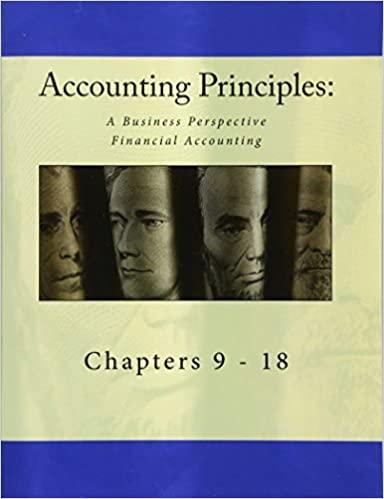Answered step by step
Verified Expert Solution
Question
1 Approved Answer
The least appropriate sampling technique when the auditor suspects fraud Random selection Haphazard selection Systematic selection All of the above Sampling risk is reduced By
- The least appropriate sampling technique when the auditor suspects fraud
- Random selection
- Haphazard selection
- Systematic selection
- All of the above
- Sampling risk is reduced
- By obtaining a larger sample
- By reviewing the auditors work
- By using a statistical sampling approach
- By using a non-statistical sampling approach
- An auditor sampled sales and found a $1,000 error. This means that
- Client sales are misstated by $1,000
- Client sales are misstated by less than $1,000
- Client sales are misstated by more than $1,000
- None of these choices are necessarily true
- When an auditor makes a mistake performing an audit test, this is classified as
- Sampling Risk
- Non-Sampling Risk
- Both A & B
- Cannot be determined
- Applying random selection and a confidence interval of 97%, the chance that any one transaction is selected from a population of 100 transactions
- 1%
- 5%
- 95%
- Cannot be determined
- Applying a statistical sampling technique,
- The auditor may not use professional judgment during the audit
- the auditor may not pick the sample size or the specific items to be tested
- the auditor may pick the sample size, but not the specific items to be tested
- the auditor may not pick the sample size, but may pick the specific items to be tested
- Using a confidence interval of 85% and a balance with a population of 1,000 transactions, the chance that any specific 20 transactions are selected
- 2%
- 10%
- 90%
- Cannot be determined
- When suing a statistical sampling technique,
- The auditor may not change the sample size
- the auditor may not use any professional judgment during the audit
- the auditor may not choose to increase the sample size, but may choose to decrease it
- the auditor may choose to increase the sample size, but may not choose to decrease it
- The best sampling technique if the auditor suspects fraud is taking place
- Random selection
- Haphazard selection
- Systematic selection
- All of the above
- Brigitte is using her laptop to create a sample. The sampling application crashes before it sends all of the transactions for testing. As a result, Brigitte tests fewer transactions than she should have. This problem was caused by
- Sampling Risk
- Non-Sampling Risk
- Type-I Sampling Risk
- Type-II Sampling Risk
- An auditor tested an account with $100,000,000 balance by sampling 5% of all its transactions. The auditors sample was misstated by $10,000. Assuming a representative sample was obtained, which of the following is most correct?
- The account is likely misstated by less than $10,000
- The account is likely misstated by $10,000
- The account is likely misstated by more than $30,000
- Not enough information
Step by Step Solution
There are 3 Steps involved in it
Step: 1

Get Instant Access to Expert-Tailored Solutions
See step-by-step solutions with expert insights and AI powered tools for academic success
Step: 2

Step: 3

Ace Your Homework with AI
Get the answers you need in no time with our AI-driven, step-by-step assistance
Get Started


